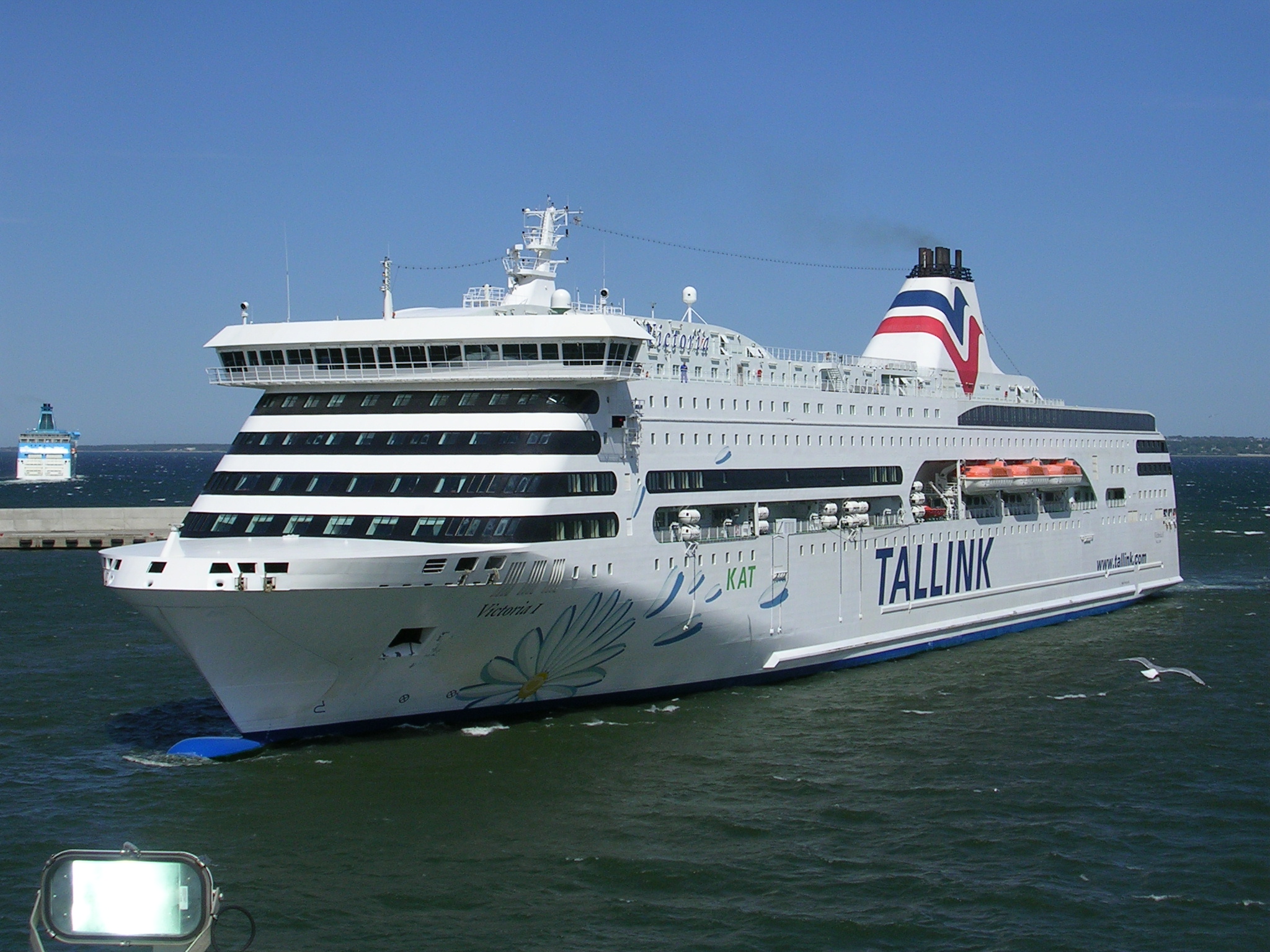|
Värtahamnen
Värtahamnen is a port in Stockholm, Sweden. Värtahamnen and the adjacent Stockholm Free Port at Lilla Värtan is Stockholm's main port. Värtahamnen primarily serves passenger ferries for the shipping company Silja Line as well as freighters for Tallink operating in Åland and Estonia. The port also services the SeaWind Line and the coal/biofuel power plant in Hjorthagen. Värtahamnen is located in the Gärdet Gärdet is a part of Stockholm, Sweden, east and northeast of Östermalm. Its official name is Ladugårdsgärdet. It is renowned for its large number of modernist apartments. Gärdet is one of the largest residential districts built in Stockholm d ... and Hjorthagen districts. The structure was built in 1879-1886 after the city bought land in order to create a port for coal and other bulk goods. Rail freight and passenger traffic were routed through the Värtabanan line when the Värtan station was inaugurated in 1882. The port was widened and deepened gradually during ... [...More Info...] [...Related Items...] OR: [Wikipedia] [Google] [Baidu] |
Värtabanan
Värtabanan is a railway just north of urban Stockholm, from Tomteboda via Norra Djurgården to Värtahamnen. It is nowadays mainly used for freight traffic linking Stockholm to the container port at Frihamnen, although a passenger service was operated on this line until 1913. A train ferry service also operated on Värtabanan between 1967 and 1975 (Stockholm – Naantali) and again from 1989 until the start of 2012 (Stockholm – Turku Turku ( ; ; , ) is a city in Finland and the regional capital of Southwest Finland. It is located on the southwestern coast of the country at the mouth of the Aura River (Finland), River Aura. The population of Turku is approximately , while t ...). Gallery Vartabanan 2007.jpg, Värtabanan in Bellevueparken Vartabanan 2007a.jpg, Värtabanan on Uggleviken VartabananStorangsbotten.jpg, Värtabanan at Storängsbotten Sources Rail transport in Stockholm Railway lines in Sweden {{Sweden-transport-stub ... [...More Info...] [...Related Items...] OR: [Wikipedia] [Google] [Baidu] |
Lilla Värtan
Lilla Värtan () or simply Värtan is a strait in Stockholm, Sweden. Separating mainland Stockholm from the island and municipality Lidingö, it stretches from Blockhusudden in the south to Stora Värtan in the north, and is joined by the Stocksundet mid-way. Two bridges, collectively called Lidingöbron ("Lidingö Bridge") stretch over the strait. While most of the coasts surrounding the strait are occupied by industries and the ferry terminals and oil tanks in the harbour area of Värtahamnen, natural beaches are found in both the southern and the northern end of the strait and the strait forms part of the Royal National City Park. Most common fish species are Baltic herring, sea trout, and salmon. Stationary predator fishes, e.g. northern pike and perch, are exposed to raised levels of mercury (element), mercury. The area is considered an important wintering location for several birds species, including swans, Eurasian coot, common pochard, tufted duck, black-headed gull, l ... [...More Info...] [...Related Items...] OR: [Wikipedia] [Google] [Baidu] |
Silja Line
Silja Line is a Finnish shipping company and cruiseferry brand owned and operated by the Estonian shipping company AS Tallink Grupp, for car, cargo and passenger traffic between Finland and Sweden. The former company Silja Oy—today Tallink Silja Oy—is, since 2006, a subsidiary of AS Tallink Grupp, handling marketing and sales for ''Tallink'' and ''Silja Line'' brands in Finland as well as managing Tallink Silja's ship employees. Another subsidiary, Tallink Silja AB, handles marketing and sales in Sweden. Strategical corporate management is performed by Tallink Grupp which also own the ships. As of 2009, four ships service two routes under the Silja Line brand, transporting about three million passengers and 200,000 cars every year. The Silja Line ships have a market share of around 50 percent on the two routes served. The Silja Line logo features the text ''Silja Line'' and a figure of a seal. Since 2014, the figure of the seal has been smiling. The famous theme tune hea ... [...More Info...] [...Related Items...] OR: [Wikipedia] [Google] [Baidu] |
Tallink
Tallink () is an Estonian shipping company operating Baltic Sea cruiseferries and ropax ships from Estonia to Finland, Estonia to Sweden and Finland to Sweden. It is the largest passenger and cargo shipping company in the Baltic Sea region. It owns Silja Line and a part of SeaRail. Tallink Hotels runs four hotels in Tallinn and Riga. It is also the co-owner of a taxi company Tallink Takso. It is a publicly traded company, that is listed in Tallinn Stock Exchange. A major shareholder is an investment company AS Infortar, that also has ownership in several Tallink subsidiaries and a natural gas company Eesti Gaas. History Background The history of the company known today as Tallink can be traced back to 1965, when the Soviet Union-based Estonian Shipping Company (ESCO) introduced passenger ferry services between Helsinki and Tallinn on . Regular around-the-year passenger ferry services began in 1968, on MS ''Tallinn'', which served the route until it was replaced by th ... [...More Info...] [...Related Items...] OR: [Wikipedia] [Google] [Baidu] |
Ports And Harbours Of Sweden
Ports collections (or ports trees, or just ports) are the sets of makefiles and patches provided by the BSD-based operating systems, FreeBSD, NetBSD, and OpenBSD, as a simple method of installing software or creating binary packages. They are usually the base of a package management system, with ports handling package creation and additional tools managing package removal, upgrade, and other tasks. In addition to the BSDs, a few Linux distributions have implemented similar infrastructure, including Gentoo's Portage, Arch's Arch Build System (ABS), CRUX's Ports and Void Linux's Templates. The main advantage of the ports system when compared with a binary distribution model is that the installation can be tuned and optimized according to available resources. For example, the system administrator can easily install a 32 bit version of a package if the 64 bit version is not available or is not optimized for that machine. Conversely, the main disadvantage is compilation time, which ca ... [...More Info...] [...Related Items...] OR: [Wikipedia] [Google] [Baidu] |


